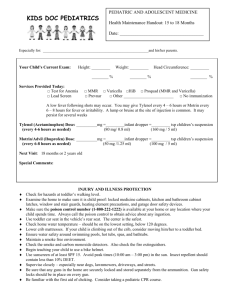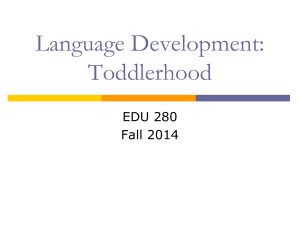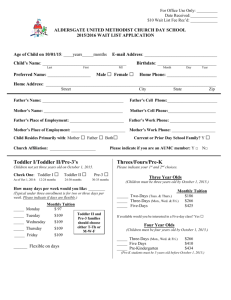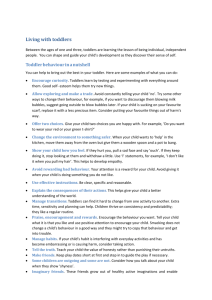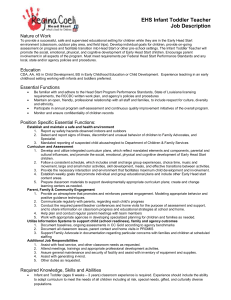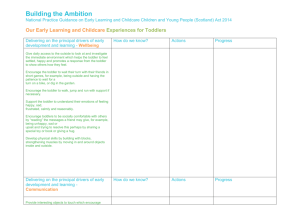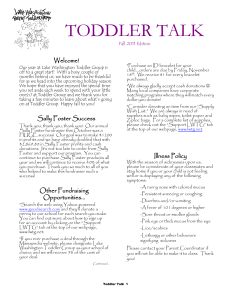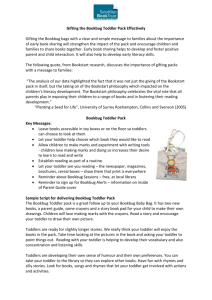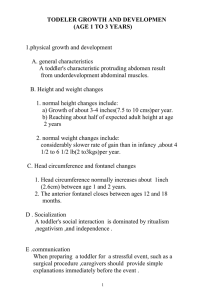To discipline means to teach!
advertisement
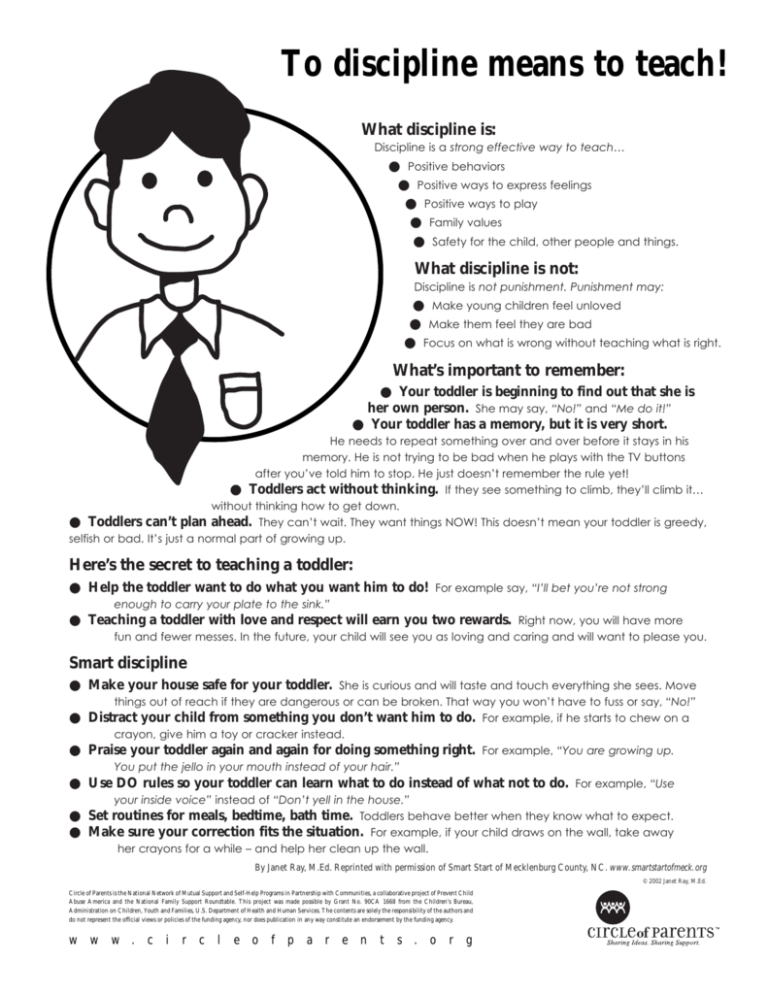
To discipline means to teach! What discipline is: Discipline is a strong effective way to teachÉ ● Positive behaviors ● Positive ways to express feelings ● Positive ways to play ● Family values ● Safety for the child, other people and things. What discipline is not: Discipline is not punishment. Punishment may: ● Make young children feel unloved ● Make them feel they are bad ● Focus on what is wrong without teaching what is right. What’s important to remember: ● Your toddler is beginning to find out that she is her own person. She may say, ÒNo!Ó and ÒMe do it!Ó ● Your toddler has a memory, but it is very short. He needs to repeat something over and over before it stays in his memory. He is not trying to be bad when he plays with the TV buttons after youÕve told him to stop. He just doesnÕt remember the rule yet! ● Toddlers act without thinking. If they see something to climb, theyÕll climb itÉ without thinking how to get down. ● Toddlers can’t plan ahead. They canÕt wait. They want things NOW! This doesnÕt mean your toddler is greedy, selfish or bad. ItÕs just a normal part of growing up. Here’s the secret to teaching a toddler: ● Help the toddler want to do what you want him to do! For example say, ÒIÕll bet youÕre not strong enough to carry your plate to the sink.Ó ● Teaching a toddler with love and respect will earn you two rewards. Right now, you will have more fun and fewer messes. In the future, your child will see you as loving and caring and will want to please you. Smart discipline ● Make your house safe for your toddler. She is curious and will taste and touch everything she sees. Move things out of reach if they are dangerous or can be broken. That way you wonÕt have to fuss or say, ÒNo!Ó ● Distract your child from something you don’t want him to do. For example, if he starts to chew on a crayon, give him a toy or cracker instead. ● Praise your toddler again and again for doing something right. For example, ÒYou are growing up. You put the jello in your mouth instead of your hair.Ó ● Use DO rules so your toddler can learn what to do instead of what not to do. For example, ÒUse your inside voiceÓ instead of ÒDonÕt yell in the house.Ó ● Set routines for meals, bedtime, bath time. Toddlers behave better when they know what to expect. ● Make sure your correction fits the situation. For example, if your child draws on the wall, take away her crayons for a while Ð and help her clean up the wall. By Janet Ray, M.Ed. Reprinted with permission of Smart Start of Mecklenburg County, NC. www.smartstartofmeck.org © 2002 Janet Ray, M.Ed. Circle of Parents is the National Network of Mutual Support and Self-Help Programs in Partnership with Communities, a collaborative project of Prevent Child Abuse America and the National Family Support Roundtable. This project was made possible by Grant No. 90CA 1668 from the Children's Bureau, Administration on Children, Youth and Families, U.S. Department of Health and Human Services. The contents are solely the responsibility of the authors and do not represent the official views or policies of the funding agency, nor does publication in any way constitute an endorsement by the funding agency. w w w . c i r c l e o f p a r e n t s . o r g

